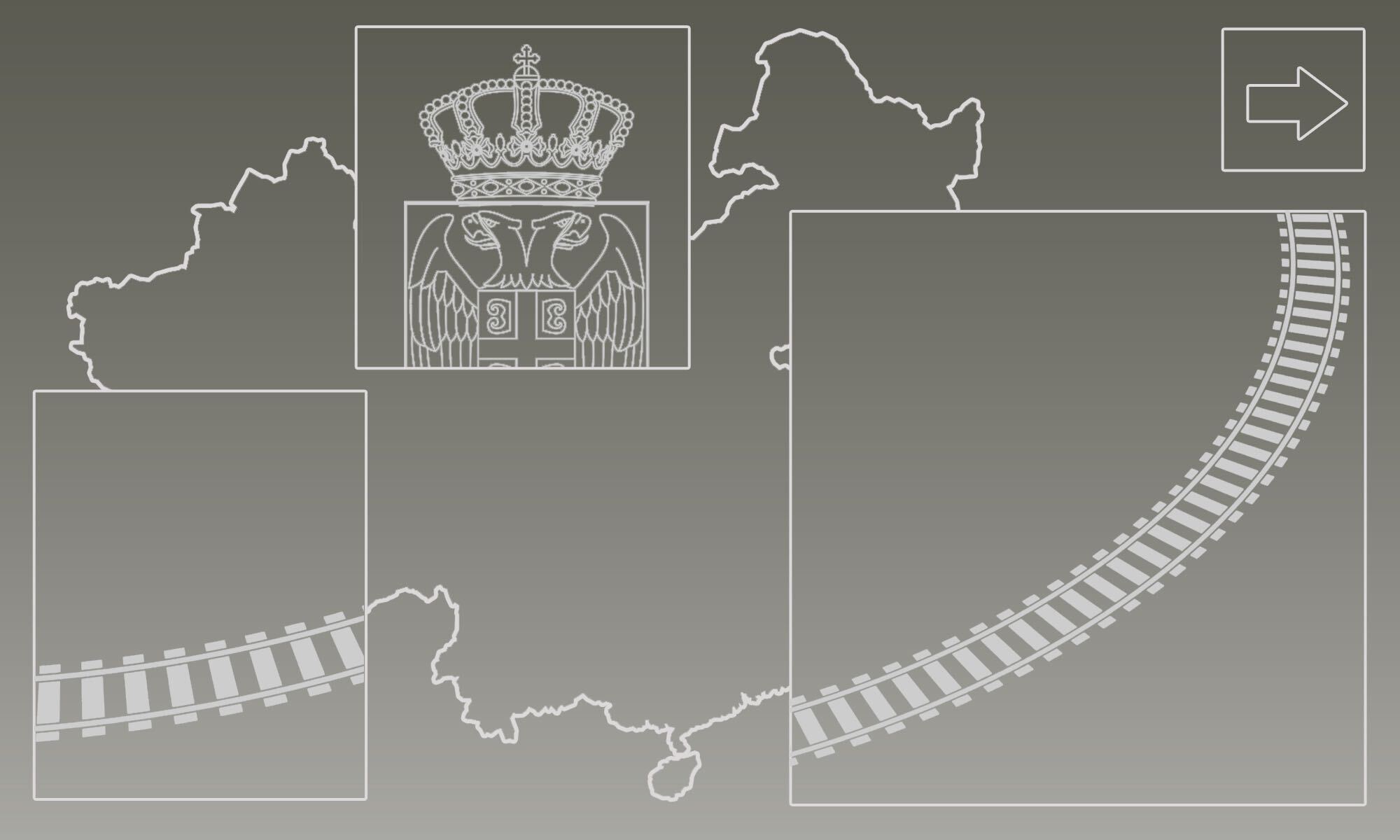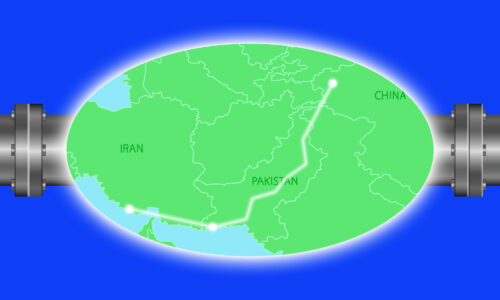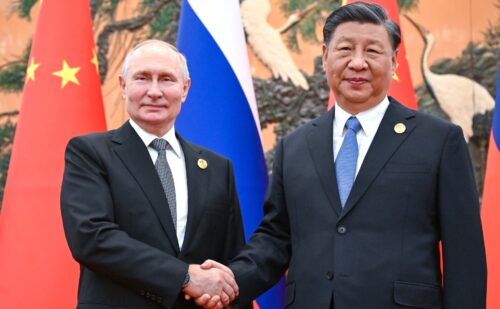The Belt and Road at 10: Revisiting the last decade of China’s landmark foreign policy initiative
The BRI is a complex, catchall brand that covers a diffuse array of strategic goals. But if we were forced to identify one, single driving force behind the Belt and Road Initiative, it would be Chinese state-owned enterprises and their pursuit of revenue.

China’s Belt and Road Initiative is now 10 years old. On September 7, 2013, Chinese President Xí Jìnpíng 习近平 stood behind a lectern at Nazarbayev University in Kazakhstan and declared China’s intention to build a “Silk Road Economic Belt” across Eurasia. A month later, Xi unveiled the 21st Century Maritime Silk Road in Indonesia, providing the “belt” and the “road” of the BRI.
Although the BRI started with a strategic vision to connect interior China with Europe through Central Asia, it has since evolved to become almost synonymous with Chinese foreign policy. It is a marketing term for China’s global economic footprint and encompasses a dizzying array of projects and activities.
In 2019, I spent a year traveling overland from the U.K. to Vietnam, visiting Belt and Road projects and talking to people about the impact of China’s ambitions. This year, I marked the BRI’s anniversary by heading back out on the road to see what has changed.
In this four-part series we’re calling the Belt and Road Dispatch, I’d like to bring to life some of the more important aspects of the BRI as it enters its second decade:
- The role of Chinese companies
- China’s soft power ambitions
- China’s role in green technologies
- The Maritime Silk Road
We start here:
The engine behind the Belt and Road? China’s state-owned enterprises

A stag and a panda stand side by side in a forest, the words Harmony, Ecology, and Civilization floating above them in Serbian and Chinese. Beneath this colossal poster, Serbia’s longest tunnel is taking shape: two seven-kilometer pipes running through Fruška Gora, the mountain at the heart of Serbia’s oldest national park.
The name of the company undertaking this $716 million project is emblazoned across the top of the poster in two-meter-high Chinese characters — China Road and Bridge Corporation (CRBC).
CRBC is one of the big beasts of the Belt and Road Initiative. It boasts one of the largest project counts in Aid Data’s database of Chinese development projects, behind only Huawei, the Chinese embassy, and its big competitor, Sinohydro. Across Africa, Latin America, Asia, and Europe, it has built hundreds of infrastructure projects, including BRI stars like the Kenya Standard Gauge Railway and the controversial $1 billion section of the Bar-Boljare highway in Montenegro.
The BRI is a complex, catchall brand that covers a diffuse array of strategic goals, from internationalizing the renminbi to securing resources in the Global South. But if we were forced to identify one, single driving force behind the Belt and Road Initiative, it would be Chinese state-owned enterprises (SOEs) and their pursuit of revenue.
Rather than being cooked up in Beijing, BRI projects are usually selected from host-country wish lists, but the Chinese institutions that are most instrumental in suggesting and lobbying for certain projects are the SOEs. Motivated by juicy contracts, they also play an important role in arranging financing from Chinese banks. The Fruška Gora Corridor, for example, involves a $608 million loan from the Export-Import Bank of China in what is the typical tied-loan model for BRI projects: Chinese financial heft married to engineering muscle.
Most of the international focus on BRI projects has been on this financial heft — especially on the concern that the BRI is adding to debt burdens in developing countries. But on the other side of the coin, the engineering muscle is no less important, and in many ways better defines the BRI. Chinese-built infrastructure projects are regularly branded as BRI, whether or not they involve Chinese finance. For Beijing, it’s still “economic cooperation” (对外经济合作 duìwài jīngjì hézuò) if it involves Chinese companies, even if there’s no cash. In pure dollar terms, contracting turnover is a significantly more important part of the BRI than FDI flows or lending; while the latter are on a downward trend, contracts are growing.
By 2018, Chinese companies accounted for 24.4% of the total revenue made by the top 250 international contractors, up from 11% a decade earlier. In 2022, 81 of the top 250 were Chinese, with CRBC’s parent company, CCCC, taking third place, and earning almost 18% of its $124 billion revenue from overseas contracts.
CRBC and its sister company, China Harbour Engineering Company (CHEC), are internationally orientated branches of CCCC, or “external windows onto the overseas market” (对外经营窗口 duìwài jīngyíng chuāngkǒu). CRBC work camps crop up all along the BRI. Squat, long buildings with bright blue corrugated metal roofs, they are usually well ordered and decorated in banners inscribed with nuggets of workplace wisdom and safety slogans: “Safety is first,” “Unity and cooperation,” “Pioneer and innovate.”
Bridges and business cards
At a CRBC camp in Kyrgyzstan I visited in 2019, engineers were quick to relay the aphorism that encapsulates the BRI spirit: “To get rich, first build a road.” The manager of a 100-kilometer road project told me that the story is always the same: “When the project starts, the people have nothing; when it’s completed, they set up a business by the road, and their mentality has changed.”
If there is a philosophy behind the Belt and Road, it is the developmental philosophy of the Chinese Communist Party — that infrastructure underwrites economic development, which is in turn a prerequisite for social stability. The BRI is driven by pragmatic concerns and CRBC by commercial profit, but there’s a sense of mission there, too.
CRBC evolved from a foreign aid office, set up in the 1950s within China’s transportation department, while CHEC, which played a role in the controversial Hambantota Port project in Sri Lanka, was established in 1980 as one of five SOEs authorized to do business overseas. CHEC and CRBC were merged in 2005 to form CCCC, but the two wings have been kept as independent subsidiaries for CCCC’s “matured” international business. Since the 2000s, CRBC has been constructing projects in Africa fairly consistently, and it has since expanded to operate over 50 offices across Asia, Africa, Europe, and the Americas — and entering Europe by setting up its Serbian office in 2010.
SOEs play an important role in driving the BRI because they are often the Chinese institutions with the most on-the-ground experience, but their entry into new markets is often facilitated at a very high level. CRBC’s first project in Serbia, indeed the first realized infrastructure project of any Chinese company in Europe, was the Mihaljo Pupin Bridge in Belgrade. Otherwise known as the Serbian-Chinese Friendship Bridge, it was opened in 2014 by Premier Lǐ Kèqiáng 李克强 and still proudly straddles the Danube River beneath Serbian and Chinese flags.

Like most BRI projects, the Pupin Bridge was on the Serbian agenda before China became involved. The bridge was selected as a demonstration project around the same time that Serbia became intent on deepening ties with Beijing as part of its “Four Pillar Foreign Policy” — a balancing strategy aimed at cultivating ties simultaneously with the EU, the U.S., Russia, and China.
Belgrade received a Chinese delegation in February 2009, led by the vice president of the Exim Bank of China, and it was at this meeting that the two sides agreed on building a bridge across the Danube as a “pilot project.” In August, China and Serbia established a “strategic partnership” during a presidential visit to Beijing, and by October that year, Serbian officials had signed a preliminary contract with the Chinese ambassador and representatives of CRBC.
For Serbia, money was the clear lure, with the president hoping the pilot project would become “a new model” for infrastructure development in Serbia. For Beijing, the main draw was to provide a bridgehead into the European market for Chinese companies. According to the general manager of the Serbia CRBC office, speaking in 2012, “to be able to build roads and bridges in Europe…is the dream of CRBC people.” For CRBC, and to some extent other Chinese companies, the Pupin Bridge served as a “business card” to drum up business in Europe.
Since 2014, CRBC has signed numerous projects in Serbia, largely financed by Chinese bank loans, but its crowning achievement came in 2018, when it won an EU-funded construction project within the EU.
Restrictive policies and workarounds
In 2018, if you wanted to drive the entire length of the sickeningly beautiful Dalmatian coast, from Split in the North to Dubrovnik in the South, you had to cross a narrow parcel of coastal land that belongs to Bosnia and Herzegovina, a country outside of the EU. The Pelješac Bridge, opened in 2022, eliminates this inconvenience — thus, in the words of Chinese Premier Li Keqiang, “safeguarding Croatia’s territorial integrity.”
CRBC was selected for this strategically important project in January 2018, after they submitted a bid of 279 million euro ($299 million), an offer 20 percent lower than that of their main competitor, Austrian construction giant STRABAG. STRABAG felt its offer had been unfairly undercut, and it appealed the decision, but to no avail. Technically, there had been no foul play, but the decision to award a project funded by EU grants to a Chinese SOE prompted a lot of soul-searching in Brussels. Although CRBC received no direct subsidies related to the project, it clearly wasn’t a company that played by market rules. For a start, it wouldn’t be in the region at all were it not for a decade of building projects in Serbia funded by Chinese loans.
The Pelješac win prompted a flurry of excitement from Chinese companies, which began bidding for more projects in Croatia, but the bridge hasn’t marked a huge turning point in China’s access to the world’s largest public procurement market. According to opentender.eu, an open platform for public tenders, companies from China and Hong Kong have won only 24 public tenders worth $1.5 billion for construction works in the EU since 2013. This is compared to 25 contracts worth $4.3 billion awarded to Turkish companies. Although Chinese contractors dominate globally and regard the EU as an attractive high-end market, they have struggled to make much progress due to onerous environmental protection and regulatory requirements.
An even bigger barrier to Chinese companies’ EU ambitions has recently emerged in the form of two new instruments adopted by the EU. The International Procurement Instrument, adopted June 2022, allows the EU to restrict the access of companies from countries like China that don’t provide EU firms fair access to their own market. Then there’s the Foreign Subsidies Regulation, which creates a mechanism to screen transactions involving financial support from non-EU countries. Both are bad news for companies like CRBC.
Beyond Europe, Chinese construction companies are also facing another hurdle: the policy banks just aren’t stumping up the cash anymore. The “tied-loan” model has served SOEs like CRBC well for decades, and has fueled their global expansion, including within Serbia, but it’s not as prevalent as it used to be. BRI lending peaked around 2016, and due to growing scrutiny of developing country debt burdens and more risk-averse lending by Chinese policy banks, it is now less common.
However, contract turnover along the BRI is growing even as lending has fallen, suggesting that Chinese construction companies have found new ways to finance projects.
One response by SOEs has been to move away from working as contractors toward developing projects. Under the “Build-Operate-Transfer” (BOT) model, the constructor recoups its investment by operating the project — by collecting tolls, for example. In Kenya, CRBC has done just this, building an expressway in Nairobi under a “public-private partnership” (PPP) with the government. The advantage of this model for host countries is that a lot of the risk shifts to the SOE. Whereas with the previous model, it was in the SOEs’ interest to make the project bigger and more expensive, regardless of economic feasibility, this time they have a larger stake in the project’s success.

CRBC has suggested using a PPP model in Montenegro. It hasn’t done so in Serbia yet, but it is still winning projects without Chinese policy bank loans. It is helping the government with its “Clean Serbia” campaign, building over $3 billion worth of sewage pipes and wastewater treatment plants in dozens of municipalities across Serbia. The financing behind the project is incredibly murky, but it does not appear that Chinese lending is involved. However, Sinosure, China’s export credit agency, is providing insurance for a $218 million loan from European banks BNP Paribas and UniCredit. The German development bank KfW, and the European Bank for Reconstruction and Development, also appear to be involved in the project.
The Belt and Road is clearly evolving. As a marketing term it now has to share the limelight with other, newer pet initiatives of Xi Jinping, like the Global Development Initiative. But it still features prominently in official communications, and the SOEs that lay at the core of the BRI aren’t going anywhere fast. Even as China’s economy takes a hit, contracts from along the Belt and Road will remain an important source of revenue for SOEs.






